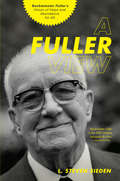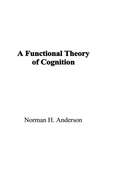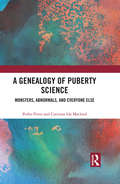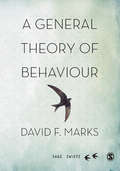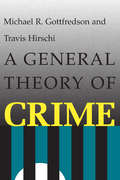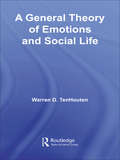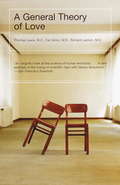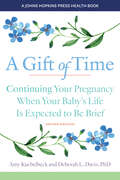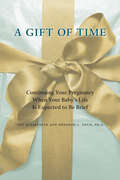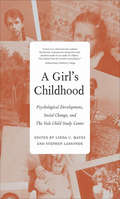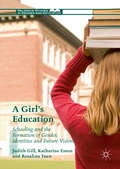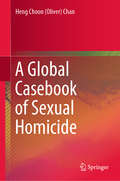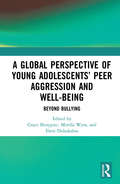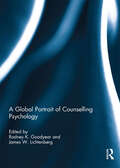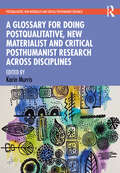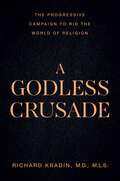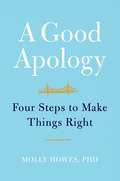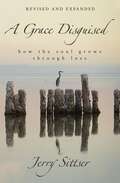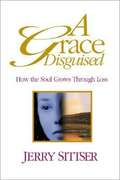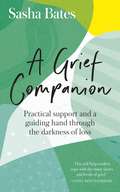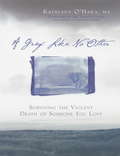- Table View
- List View
A Fuller View
by L. Steven SiedenKnown as a "Leonardo da Vinci of the twentieth century," engineer, designer, inventor, and futurist Dr. R. Buckminster "Bucky" Fuller had a keen awareness that we're all in this together. Understanding that humans don't have aclue about how to operate our fragile Spaceship Earth, Buckminster provided insightful design science solutions to our most challenging issues, including war, overpopulation, housing, increasing inflation, health care, the energy crisis, and much more. For all its genius, Fuller's legacy has yet to be fully discovered. Noted Fuller expert L. Steven Sieden together with Gary Zukav, John Robbins, Lynne Twist, Jean Houston, and many other notable individuals offer inspiring quotations and explanations that make Fuller's life more understandable and accessible. They preserve a voice that calls upon each of us to shift our intellectual and technological resources from creating weaponry to creating sustainability.Winner 2013 COVR award - Gold
A Functional Theory of Cognition
by Norman H. AndersonA unified, general theory of functional cognition is presented in this book. Its generality appears in the titles of the 13 chapters listed below. Its unity appears in the effectiveness of the same methods and concepts across all of these areas. Generality and unity both stem from the foundation axiom of purposiveness. The axiom of purposiveness has been made effective through capability for functional measurement of values, which embody the goal-directed character of purposiveness. This measurement capability is based on the general cognitive algebra established in information integration theory. Functional theory can thus be made precise and effective near the level of everyday phenomenology. The book is written at a relatively simple level, directed at readers in every field of psychology. Among its characteristics are: * self-sufficient theory near the level of everyday phenomenology; * foundation on structure of the internal world; and * solid grounding in experimental analysis.
A Genealogy of Puberty Science: Monsters, Abnormals, and Everyone Else
by Pedro Pinto Catriona Ida MacleodA Genealogy of Puberty Science explores the modern invention of puberty as a scientific object. Drawing on Foucault’s genealogical analytic, Pinto and Macleod trace the birth of puberty science in the early 1800s and follow its expansion and shifting discursive frameworks over the course of two centuries. Offering a critical inquiry into the epistemological and political roots of our present pubertal complex, this book breaks the almost complete silence concerning puberty in critical theories and research about childhood and adolescence. Most strikingly, the book highlights the failure of ongoing medical debates on early puberty to address young people’s sexual and reproductive embodiment and citizenships. A Genealogy of Puberty Science will be of great interest to academics, researchers and postgraduate students in the fields of child and adolescent health research, critical psychology, developmental psychology, health psychology, feminist and gender studies, medical history, science and technology studies, and sexualities and reproduction studies.
A General Theory of Behaviour (SAGE Swifts)
by David F. MarksPsychologists like to claim that Psychology is a science, yet, until now, the discipline has lacked any real scientific laws, has had no overarching scientific paradigm and has been blighted by poor replicability of research, all of which have dogged the discipline. Attempts to place Psychology under a single scientific umbrella, e.g. Behaviourism, Cognitivism, Biological Science, Social Science or Human Science, have all failed for a host of reasons. This unique book presents a single paradigm for all of Psychology within a framework of Natural Science. For example, it employs as a model an organising principle known in another scientific discipline for over a century, the principle of Homeostasis. Findings across the entire discipline including perception, learning, emotion, stress, addiction, well-being and consciousness are all shown to be consistent with a new paradigm based on this, and other principles drawn from natural science.
A General Theory of Behaviour (SAGE Swifts)
by David F. MarksPsychologists like to claim that Psychology is a science, yet, until now, the discipline has lacked any real scientific laws, has had no overarching scientific paradigm and has been blighted by poor replicability of research, all of which have dogged the discipline. Attempts to place Psychology under a single scientific umbrella, e.g. Behaviourism, Cognitivism, Biological Science, Social Science or Human Science, have all failed for a host of reasons. This unique book presents a single paradigm for all of Psychology within a framework of Natural Science. For example, it employs as a model an organising principle known in another scientific discipline for over a century, the principle of Homeostasis. Findings across the entire discipline including perception, learning, emotion, stress, addiction, well-being and consciousness are all shown to be consistent with a new paradigm based on this, and other principles drawn from natural science.
A General Theory of Crime
by Michael R. Gottfredson Travis HirschiBy articulating a general theory of crime and related behavior, the authors present a new and comprehensive statement of what the criminological enterprise should be about. They argue that prevalent academic criminology--whether sociological, psychological, biological, or economic--has been unable to provide believable explanations of criminal behavior. The long-discarded classical tradition in criminology was based on choice and free will, and saw crime as the natural consequence of unrestrained human tendencies to seek pleasure and to avoid pain. It concerned itself with the nature of crime and paid little attention to the criminal. The scientific, or disciplinary, tradition is based on causation and determinism, and has dominated twentieth-century criminology. It concerns itself with the nature of the criminal and pays little attention to the crime itself. Though the two traditions are considered incompatible, this book brings classical and modern criminology together by requiring that their conceptions be consistent with each other and with the results of research. The authors explore the essential nature of crime, finding that scientific and popular conceptions of crime are misleading, and they assess the truth of disciplinary claims about crime, concluding that such claims are contrary to the nature of crime and, interestingly enough, to the data produced by the disciplines themselves. They then put forward their own theory of crime, which asserts that the essential element of criminality is the absence of self-control. Persons with high self-control consider the long-term consequences of their behavior; those with low self-control do not. Such control is learned, usually early in life, and once learned, is highly resistant to change. In the remainder of the book, the authors apply their theory to the persistent problems of criminology. Why are men, adolescents, and minorities more likely than their counterparts to commit criminal acts? What is the role of the school in the causation of delinquincy? To what extent could crime be reduced by providing meaningful work? Why do some societies have much lower crime rates than others? Does white-collar crime require its own theory? Is there such a thing as organized crime? In all cases, the theory forces fundamental reconsideration of the conventional wisdom of academicians and criminal justice practitioners. The authors conclude by exploring the implications of the theory for the future study and control of crime.
A General Theory of Emotions and Social Life (Routledge Advances in Sociology)
by Warren D. TenHoutenFounded upon the psychoevolutionary theories of Darwin, Plutchik and Izard, a general socioevolutionary theory of the emotions - affect-spectrum theory - classifies a wide spectrum of the emotions and analyzes them on the sociological, psychological and neurobiological levels. This neurocognitive sociology of the emotions supersedes the major theoretical perspectives developed in the sociology of emotions by showing primary emotions to be adaptive reactions to fundamental problems of life which have evolved into elementary social relationships and which can predict occurrences of the entire spectrum of primary, complex secondary, and tertiary emotions. Written by leading social theorist Warren D. TenHouten, this book presents an encyclopaedic classification of the emotions, describing forty-six emotions in detail, and presenting a general multilevel theory of emotions and social life. The scope of coverage of this key work is highly topical and comprehensive, and includes the development of emotions in childhood, symbolic elaboration of complex emotions, emotions management, violence, and cultural and gender differences. While primary emotions have clearly defined valences, this theory shows that complex emotions obey no algebraic law and that all emotions have both creative and destructive potentialities.
A General Theory of Love
by Thomas Lewis Fari Amini Richard LannonDrawing on new scientific discoveries and seventy years of collective clinical experience, three psychiatrists unravel life's most elemental mystery: the nature of love. A primordial area of the brain, far older than reason or thinking, creates both the capacity and the need for emotional intimacy that all humans share. A General Theory of Lovedescribes the workings of this ancient, pivotal urge and reveals that our nervous systems are not self-contained. Instead, our brains link with those of the people close to us, in a silent rhythm that makes up the very life force of the body. These wordless and powerful ties determine our moods, stabilize and maintain our health and well-being, and change the structure of our brains. In consequence, who we are and who we become depend, in great part, on whom we love. A General Theory of Loveapplies these and other extraordinary insights to some of the most crucial issues we face in our lives. Its authors explain how relationships function and where love goes wrong, how parents shape a child's developing self, how psychotherapy really works, what curbs and what fosters violent aggression in our children, and how modern society regularly courts disaster by flouting emotional laws it does not yet recognize. A work of rare originality, passion, and eloquence,A General Theory of Lovewill forever change the way you think about human intimacy.
A Generation Divided: German Children and the Berlin Wall
by Thomas A. DaveyAn inquiry into the lives of children of similar, if not identical, historical an cultural heritage who today find themselves in radically opposed ideological worlds, regarding one another across the concrete manifestation of their considerable differences, the Berlin Wall. Under these circumstances, what are the significant factors that contribute to the development in children of feelings of loyalty to or alienation from their nation? How do they view not only themselves, but the "other" Germans as well? How do they come to terms, emotionally and cognitively, with a unique, frequently painful, and frustrating reality? What are the lessons intended for them by their societies, and what lessons do they in fact learn? How do these children persist as Germans while at the same time becoming something else -- "communists? or "capitalists"?Thomas Davey conducted interviews with children both sides of the Wall, participated in their daily lives, collected their drawings, talked with their teachers and families and grew aware of just how attentive children can be to moral and political subtleties of national life. The result is a revealing and dramatic portrait of a young generation coming to terms with complex national and historical circumstances of the two cites of East and West Berlin.
A Gestalt Therapist’s Guide Through the Depressive Field: Giving Way to Hope (The Gestalt Therapy Book Series)
by Jan RoubalThis book is intended for psychotherapists working with depressed clients. In particular, it focuses on how working with depressed clients affects the therapists themselves, and elaborates on how therapists can care for themselves in such demanding work to prevent burnout, or process it meaningfully as part of their professional development.Based on the results of the author’s own long-term experience, qualitative research and theoretical concepts describing psychopathology from the humanistic-existential perspective of Gestalt therapy, this book describes a paradoxical way of working in which therapists transform their own experience in the presence of a depressed client. Using the example of working with depression, the book introduces how the field theory approach can be used in clinical practice. The book provides a conceptual framework, practical skills and case examples illustrating what a field theory approach brings new to the table.This will be a useful guide for psychotherapists and Gestalt therapists who regularly come into contact with depressive clients, as well as for therapists who are themselves experiencing professional exhaustion and are at risk of reaching burnout.
A Gift of Time: Continuing Your Pregnancy When Your Baby's Life Is Expected To Be Brief (A\johns Hopkins Press Health Book Ser.)
by Amy Kuebelbeck And Deborah L. DavisA Gift of Time: Continuing Your Pregnancy When Your Baby's Life Is Expected to Be Brief
by Amy Kuebelbeck Deborah L. DavisA Gift of Time is a gentle and practical guide for parents who decide to continue their pregnancy knowing that their baby's life will be brief. When prenatal testing reveals that an unborn child is expected to die before or shortly after birth, some parents will choose to proceed with the pregnancy and to welcome their child into the world. With compassion and support, A Gift of Time walks them step-by-step through this challenging and emotional experience—from the infant's life-limiting prenatal diagnosis and the decision to have the baby to coping with the pregnancy and making plans for the baby’s birth and death. A Gift of Time also offers inspiration and reassurance through the memories of numerous parents who have loved a child who did not survive. Their moving experiences are stories of grief—and of hope. Their anguish over the prenatal diagnosis turns to joy and love during the birth of their child and to gratitude and peace when reflecting on their baby’s short life.Full of practical suggestions for parents and for caregivers, A Gift of Time also features the innovative concept of perinatal hospice and palliative care. Caring and thoughtful, the book helps parents embrace the extraordinary time they will have with their child.
A Girl's Childhood
by Stephen Lassonde Deborah Weinstein Dr Linda C. MayesSixty years ago, a group of prominent psychoanalysts, developmentalists, pediatricians, and educators at the Yale Child Study Center joined together with the purpose of formulating a general psychoanalytic theory of children’s early development. The group’s members composed detailed narratives about their work with the study’s children, interviewed families regularly and visited them in their homes, and over the course of a decade met monthly for discussion. The contributors to this volume consider the significance of the Child Study Center’s landmark study from various perspectives, focusing particularly on one child’s unfolding sense of herself, her gender, and her relationships.
A Girl's Education: Schooling and the Formation of Gender, Identities and Future Visions (Palgrave Studies in Gender and Education)
by Judith Gill Katharine Esson Rosalina YuenThis book argues that educators and the general public have become complacent about girls' education as a consequence of the more recent fuss about problems for boys. After an analysis of persistent disquiet about girls' lifestyles, it uses theories of gender and education to demonstrate that girls are being produced in contradictory ways in current schooling. Many girls develop a sense of themselves through close connection with friendship groups but schooling processes typically require them to adopt the position of competitors in the end-of-school rankings and to act out their individualized positions in imagining themselves into the future. Ultimately the work offers insight and understanding leading to a less divisive educational pathway for girls.
A Global Casebook of Sexual Homicide
by Heng Choon ChanThis book comprehensively discusses 13 infamous cases of serial and non-serial sexual homicide committed around the globe in the past four decades (1974–2010). Offering a psycho-criminological perspective, it analyzes the cases theoretically (i.e., contributing and precipitating factors, and offender typology) and considers the practical implications (i.e., investigative and crime-preventive measures, and social services). The first book to offer a glimpse of this topic from a global perspective, it adopts a unique approach—case background and critical analysis. As such it is a valuable source of reference for scholars, clinicians, and law enforcement practitioners wanting to gain a better understanding of this type of violent offender.
A Global Perspective of Young Adolescents’ Peer Aggression and Well-being: Beyond Bullying
by Grace Skrzypiec Mirella Wyra Eleni DidaskalouReporting on the findings from a study of young people across 11 different world locations (Australia, Mainland China, Greece, India, Indonesia, Italy, Korea, The Philippines, Poland, Spain, and Taiwan), A Global Perspective of Young Adolescents’ Peer Aggression and Well-being looks beyond bullying to assess the harm to mental health and well-being of young people experiencing peer aggression in all its forms. The first book in a global movement that recommends a new dialogue on peer aggression, this book delves into the poorly understood nexus of peer aggression and bullying through the use of statistical data from questionnaires, as well as the students’ own words and illustrations. By considering data from multiple countries, it addresses critical questions about cultural variation in aggression and associated well-being. Addressing the issue that there is a growing focus on other forms of aggression other than bullying, A Global Perspective of Young Adolescents’ Peer Aggression and Well-being will offer invaluable insight for practicing teachers and school counsellors, as well as any researchers with an interest in the health and well-being of young adolescents.
A Global Portrait of Counselling Psychology
by Rodney K. Goodyear and James W. LichtenbergThe official birth of counselling psychology is said to have occurred in 1951, when key United States leaders in what was then called the field of guidance and counselling formally adopted the terms ‘counselling psychologist’ and ‘counselling psychology’ to describe their profession. In the 65 years that have followed, counselling psychology has thrived, as reflected in the fact that it now is a recognized applied psychology specialty in a number of countries worldwide. The form and expression of counselling psychology differs across countries and yet the specialty retains certain recognizable features wherever it is practiced.Drawing on data collected through a survey of professionals in eight different countries, this volume considers both ways in which the specialty is distinctive within each of the eight countries, as well as that which is characteristic of counselling psychology across them all. This survey of the international character of counselling psychology examines the emergence and the history of the field; the training, preparation and credentialing of professionals; and the practices and practice settings of counselling psychologists. This book was originally published as a special issue of Counselling Psychology Quarterly.
A Glossary for Doing Postqualitative, New Materialist and Critical Posthumanist Research Across Disciplines (Postqualitative, New Materialist and Critical Posthumanist Research)
by Karin MurrisA Glossary for Doing Postqualitative, New Materialist and Critical Posthumanist Research Across Disciplines gives novices and experienced researchers clear and comprehensible introductions to theories, paradigm shifts and key concepts in postqualitative, feminist new materialist and critical posthumanist research. The ten authors, who have a wealth of experience of teaching and conducting postqualitative research, have explored 72 key concepts and binaries. Supported by links to the series website (https://postqualitativeresearch.com/), this user-friendly glossary contains short entries of the main concepts, binaries and verbs in this field of research. The series website gives practical provocations that characterize the postqualitative terrain. Disrupting the theory/practice divide, the Glossary provides a postqualitative reimagining of traditional research processes while guiding readers through the contestation of binaries and innovative concepts. The Glossary is an accessible and introductory guide for novice qualitative researchers, and is of use to established academics already working with postqualitative approaches. It is an indispensable companion to the primary texts and original sources by theorists discussed in this and other books in the series.
A Godless Crusade: The Progressive Campaign to Rid the World of Religion
by Richard KradinIn the 21 st century, America has become a polarized nation on the brink of civil war. Progressive elites have succeeded in capturing virtually all of America&’s major institutions and are actively threatening to silence and ostracize conservatives from the public square. Many Americans are at a loss to explain how we have arrived at this place. A Godless Crusade traces the evolution of the culture wars to the rise of secular humanism and secular religion that denies the role of God and revealed morality and seeks to expunge them from society. &“Wokism&” as the most recent avatar of cultural Marxism represents a direct attack on God and the Judeo-Christian ethic, opposing views that will not peacefully be reconciled.
A Good Apology: Four Steps to Make Things Right
by Molly HowesThrough its four essential steps, A GOOD APOLOGY gives groundbreaking advice on how best to make an effective apology toward rebuilding any relationship, for readers of The Body Keeps the Score.We've all done something wrong or made a mistake or insulted someone -- even if by accident. We've all been hurt and wanted the other person to help us heal. It may be surprising, but the breaches themselves aren't the real problem; our inability to fix them is what causes us trouble.In A Good Apology, Dr. Molly Howes uses her experiences with patients in her practice, research findings, and news stories to illustrate the power and importance of a thorough apology. She teaches how we can all learn to craft an effective apology with four straightforward steps.An apology is a small-scale event between people, but it's enormously powerful. This comprehensive book gives readers the tools to fix their relationships, make amends, and move forward. With it, you'll fully understand the meaning and importance of this universal and timeless endeavor: a good apology.
A Grace Disguised Revised and Expanded: How the Soul Grows through Loss
by Jerry L. SittserWith vulnerability and honesty, Jerry Sittser walks through his own grief and loss to show that new life is possible--one marked by spiritual depth, joy, compassion, and a deeper appreciation of simple and ordinary gifts. This 25th anniversary edition features a new introduction and two additional chapters, one which provides help for pastors and counselors.Loss came suddenly for Jerry Sittser. In an instant, a tragic car accident claimed three generations of his family: his mother, his wife, and his young daughter. While most of us will not experience such a catastrophic loss in our lifetime, all of us will face some kind of loss in life. But we can, if we choose, know the grace that transforms us.Whether your suffering has come in the form of chronic illness, disability, divorce, unemployment, crushing disappointment, or the loss of someone you love, Sittser will help you put your thoughts into words in a way that will guide you deeper into your own healing process.This revised edition of A Grace Disguised plumbs the depths of our sorrows, asks questions many people are afraid to ask, and provides hope in its answers:Will the pain ever subside?Will my life ever be good again?Will the depression ever lift?Will I ever overcome the bitterness I feel?What is God's plan in all of this?The circumstances are not important; what we do with those circumstances is. In coming to the end of ourselves, we can come to the beginning of a new life.
A Grace Disguised: How the Soul Grows Through Loss
by Gerald L. SittserIn an instant, an accident took the author's mother, wife and young daughter. How can we begin with a new life, one with joy, depth and compassion?
A Grief Companion: Practical support and a guiding hand through the darkness of loss (Languages of Loss)
by Sasha Bates'This is a book that takes you by the hand and promises the gentlest comfort in the darkest of times.' Tamsin GreigA Grief Companion offers us practical help to use alongside the theory of Sasha Bate's debut book, Languages of Loss. This guide gives us the starting points to begin our journeys of managing grief, providing us with space and pages to explore and process our feelings with Sasha's expert guidance.Sasha offers some optimism to let you know that you will find light and courage from out of this darkness, and you will be transformed by it. Your grief will not leave you, but you will arrange yourself around it differently. Split in to four sections, that can be read in any order - Mind, Body, Spirit and Everyday - this book explores the non-linear grief that you may be feeling and gives you permission to do your grief, your way. Filled with suggestions, resources, advice for friends of the bereaved and a guiding hand, we hope this book will help you see some light in the darkness of grief.'Explaining how the mind and body work together, A Grief Companion offers insights into the process of grieving. The writing is energetic, down-to-earth and honest as Sasha Bates helps readers cope with the many layers and levels of grief. A useful as well as a moving book.' Cathy Rentzenbrink, author of A Manual for Heartache
A Grief Companion: Practical support and a guiding hand through the darkness of loss (Languages of Loss)
by Sasha Bates'This is a book that takes you by the hand and promises the gentlest comfort in the darkest of times.' Tamsin GreigA Grief Companion offers us practical help to use alongside the theory of Sasha Bate's debut book, Languages of Loss. This guide gives us the starting points to begin our journeys of managing grief, providing us with space and pages to explore and process our feelings with Sasha's expert guidance.Sasha offers some optimism to let you know that you will find light and courage from out of this darkness, and you will be transformed by it. Your grief will not leave you, but you will arrange yourself around it differently. Split in to four sections, that can be read in any order - Mind, Body, Spirit and Everyday - this book explores the non-linear grief that you may be feeling and gives you permission to do your grief, your way. Filled with suggestions, resources, advice for friends of the bereaved and a guiding hand, we hope this book will help you see some light in the darkness of grief.'Explaining how the mind and body work together, A Grief Companion offers insights into the process of grieving. The writing is energetic, down-to-earth and honest as Sasha Bates helps readers cope with the many layers and levels of grief. A useful as well as a moving book.' Cathy Rentzenbrink, author of A Manual for Heartache
A Grief Like No Other: Surviving the Violent Death of Someone You Love
by Kathleen O'Hara Dr Dan Gottlieb Dr.A Grief Like No Other is the book no one wants to ever have to buy; sadly, many people continue to need it. From 9/11 to Cindy Sheehan's son - from mass tragedies like the recent London bombings to Law and Order type crimes that make the news only to be replaced by another name. As such, more people are left with the aftermath of dealing with the violent death of a loved one. It brings its own special brand of grieving since victim's families can spend years dealing with legal ramifications, guilt, and a myriad of other circumstances that don't accompany "normal" deaths. Kathleen O'Hara knows both sides of this coin. As a therapist, she has counseled hundreds of people dealing with grief. As a mother, she saw her worst fears realized when her college-aged son was brutally murdered in 1999. In the aftermath of Aaron's murder, O'Hara developed the seven stage journey that is at the heart of A Grief Like No Other. Although this is a book for those left behind in the aftermath of violence, it offers concrete and practical steps and stages, allowing family and friends safe passage through this incredibly harrowing journey.
